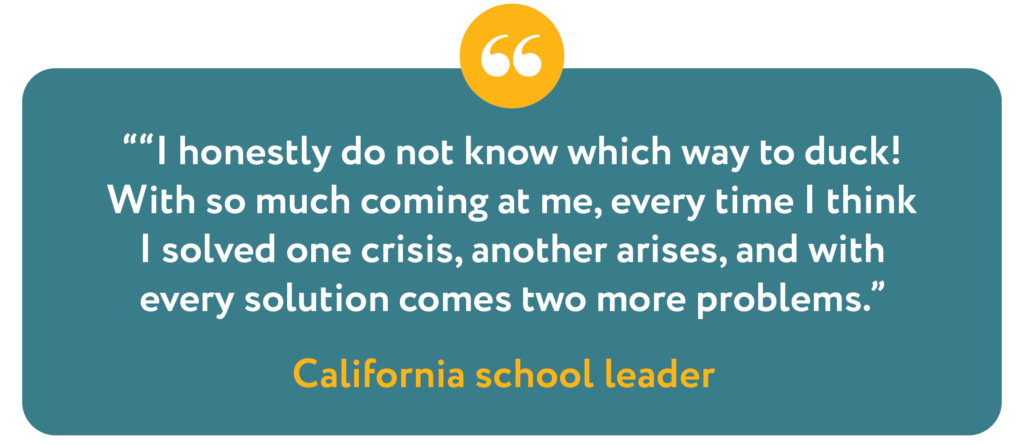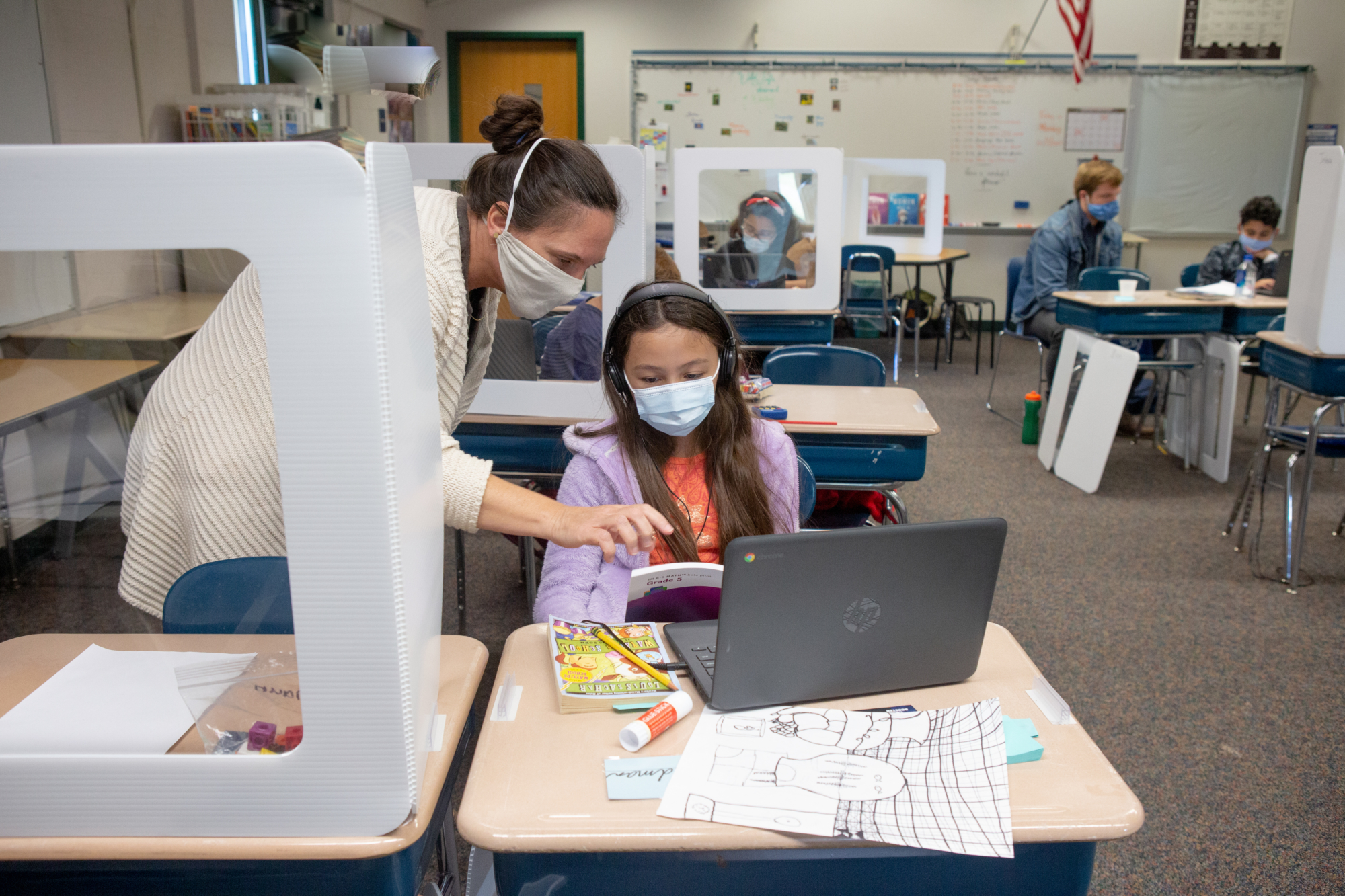With the severely disrupted 2019-20 school year behind us, the majority of students receiving their education in virtual settings, and the pandemic still front and center in our communities, the need to connect and re-envision partnerships with students and families has never been more important. Historically, engaging with families to reduce barriers and partnering with them to support their children’s learning needs has never been easy. Moreover, fostering an inclusive environment that elevates students voice and agency and allows them to contribute to their own learning can be challenging in a virtual setting. It is crucial that we reimagine these efforts to assure students are safe and develop plans to reach out directly to students and families to assure they have the supports necessary to succeed both academically, socially, and emotionally in a virtual setting.
The pandemic has left many students and adults struggling and in crisis, according to a nationwide Gallup poll in June, with 70% of parents reporting their child is experiencing either major or minor challenges as a result from being separated from their classmates and teachers. It’s not just being separated from school in which students are suffering. In a recent presentation by the Department of Justice, “Protecting Students During the COVID-19 Crisis: Recognizing and Responding to Child Abuse and Sexual Exploitation” statewide reports of suspected child abuse have dropped 28% from April to August compared to the same time period in 2019. This would normally be good news, but with educators serving as the largest reporters in the state with 21% of all reports, many cases of child abuse are going unreported in virtual settings without the ability to assess the health of children in our classrooms and schools. Based on the same Gallup poll mentioned above, we also know that adults too are struggling with social distancing practices and closures, with 15% reporting that they are experiencing harm to their own emotional or mental health. The pandemic has only deepened deeply rooted social and racial injustices and perpetuated educational inequities due to a lack of access to school learning for those who have always been underserved in our school systems. Add in the economic downturn, unemployment rise, racial injustice, political differences, and undisputed pressures educators are feeling to provide a more robust distance learning program, all while the global health crisis still rages in our communities.
The need to connect directly with every student and their families is paramount to the success and safety of children, with in-person instruction, academics take center stage and the “soft skills” that include empathy, self-care and understanding are often addressed when a behavior is observed or arises at school. In a school setting where educators see students daily in their classrooms, they are able to greet children with a warm hello, high five, hug, or handshake as they get on the bus, arrive at school or enter the door of the classroom. They have opportunities to observe firsthand, face-to-face, the wellbeing of their students. In virtual classrooms, the teacher-student connection is more challenging and heightened mental health problems are not as easily detected. It is imperative that educators make it their number one priority to create and implement systems that are intentional in their efforts to reach out to children individually and on a regular basis to assess and determine the support their students need as they continue to adjust to a distance learning environment.
Prioritizing family engagement must also not fall solely on teachers as school and district leaders will need to provide additional support staff to meet with families, listen and understand the realities they’re facing, and help them address the needs of their children at home. Dedicating staff and multidisciplinary teams can include school counselors, social workers and other stakeholders such as school nurses, teachers, and related community members who have access to resources and possible roots within the community to reach across racial and bilingual divides. This too will require access to resources to help support these efforts as they check in with students weekly, biweekly or in calculated intervals to determine if students are safe from harm within their own homes, adjusting, coping, succeeding and/or failing academically, socially and emotionally in their distance learning setting.
Office hours and hotlines can also provide access to help students and families reach out to the school for support, but we must be careful to assure that this is not the only way families can connect with the school, nor should it be the sole responsibility of students and/or their families to contact the teacher of school. Families need to feel confident that the school welcomes their concerns, ideas, and contributions, provides opportunities to discuss how their child is adjusting, participating, and identifies how much time their children are spending online and completing assignments. Districts should also consider where possible universal mental health screener tools to gather and analyze data, recognizing that 80% of chronic mental health disorders begin in childhood and approximately one-third of children display signs of stress during normal times. Access to this type of data will help focus resources to assure those students most in need are being cared for and can succeed while continuing to learn in virtual settings.
With child abuse reporting at an all-time low, we must provide educators with strategies to help identify children who may be experiencing abuse within their homes. This can include looking for physical signs of abuse such as bruises on the torso, ears or neck during check-ins with students, changes in behavior between each check-in that may include high anxiety, depression, aggression, as well as lack of hygiene. Other strategies can include adjusting the speaker view in Zoom or in other online platforms that provide opportunities to bring students front and center on the screen to see, hear and observe their well-being. Student absences also provide clear indications that a child is not experiencing success in the virtual environment or may be at risk of abuse. In these cases, we must reach out daily and if necessary, make home visits to assure every student is accounted for, safe and receiving ongoing, regular emotional check-ins. In some cases, it may be the difference of providing not only a safe haven for learning, but an escape from additional violence and harm to a student in their own home. Administrators must support their staff with resources and regular opportunities to meet regularly and discuss students in need to determine the resources needed to provide these students with the support they need.
Local Efforts to Address Mental Health and Wellness
#ComeBackCASchools
- Marin COE offers resources to support mental health and wellness. Click here to hear Marin County high school students discuss mental health, wellness, and student engagement with their district leadership teams.
- San Juan USD offers a virtual Wellness Room for students, families, and staff. Additional resources can be found on SJUSD’s Online Family Resource Center and Family Resources Hub.
Resources to Support Mental Health and Wellness
California Parent & Youth Helpline
- (855) 4A PARENT or (855) 427-2736
- caparentyouthhelpline.org
Childhelp National Child Abuse Hotline
- (800) 4A CHILD or (800) 422-4453
- childhelp.org
CASC COVID-19 K12 COUNSELING
Additional Readings
- How to Grow Teacher Wellbeing in Your Schools – REL Pacific & Institute of Education Services (IES)
- 3 Recommendations to Support School Leaders During the Coronavirus Pandemic – Global Partnership for Education
- How Principals and District Leaders are Trying to Boost Lagging Teacher Morale During COVID-19 – Education Week

We must all call attention to and recognize that adults too are struggling and in order to address the needs of our students, we need to assure we are taking care of our teachers, staff, and school and district administrators. Educators who have experienced their own trauma are being asked to teach in settings that are foreign to them, and in many cases, are also managing their own children or caring for sick and elderly family members while working from home remotely . Even a teacher’s classroom, once considered their space and place to design as their own, has changed with desks spread out, plexiglass, masks or shields in place and other changes designed to keep a safe distance from students, eliminating teaching strategies like proximity and other forms of care that provide comfort for students. School leaders too are scrambling every day to address a situation for which they have a limited playbook to support students, staff and families often in the midst of criticism. Our school personnel need similar supports and check-ins to assure they are well and have the resources necessary to assure the wellbeing of those they serve. And of course we must recognize this is during a time when the pandemic is still present and many are in fear of acquiring the virus or giving it to one of their students and bringing it home to their families. These fears are real and in order for the adults to take care of students, they too need the same kind of supports and opportunities to gain trust that they will be safe and the school has systems in place to assure they are well.
In this month’s CCEE newsletter, you will find additional resources and tools to provide students and staff with the support needed to foster their well-being in distance learning and hybrid settings. As California schools continue to reopen and children reacclimate to school, new social, emotional, and mental health challenges will continue to be amplified, calling for a reimagining of traditional home-school partnerships and additional efforts to foster strong relationships — and we must be prepared to act.
AUTHOR
Tom Armelino,
Executive Director,
CCEE
